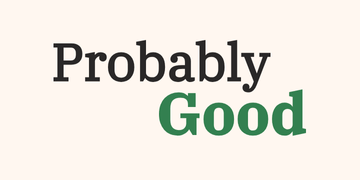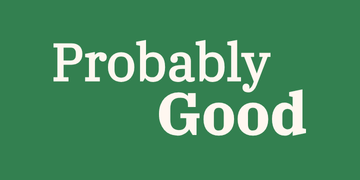By now, you’ve probably started noticing patterns about what motivates you, what you care about, and how you might want to contribute. The next step is turning those early insights into something more concrete. That doesn’t mean figuring out your whole career in one go, but starting to sketch out directions that feel worth exploring.
This isn’t about locking in a single plan. It’s about identifying a few promising directions—paths that seem worth exploring more seriously because they align with both your interests and your potential to contribute.
One way to begin is by looking at some common strategies people use to have an impact through their careers. These strategies aren’t rigid or mutually exclusive. You might combine them, shift between them, or adapt them to your situation. But thinking in terms of these broad approaches can help clarify what kinds of roles or opportunities might make the most sense for you right now.
Direct work
One of the most straightforward ways to contribute is by working directly on a problem you care about. That might mean a frontline role like a public health worker, climate scientist, or aid distributor. But it also includes supporting roles: operations managers who keep projects running smoothly, software engineers at mission-driven nonprofits, and policy advisors helping governments make better decisions.
Direct work is often where you see the most immediate effects, but it’s also where the right fit really matters. Almost every high-impact organization needs a broad mix of roles to function well. If you bring your skills to an area where the stakes are high and progress is possible, your career can become an incredible way to help the world.
Career capital
That said, you don’t have to start with direct work to make a difference. In fact, one of the most strategic things you can do (especially early in your career) is invest in your potential to contribute more over time. This might mean taking on a role where you can receive mentorship, build expertise, develop transferable skills, or expand your professional network.
These assets—skills, relationships, and experience that open doors—are collectively known as career capital. They can give you more influence, flexibility, and credibility down the line, making it easier to take on ambitious work when the time is right. For example, someone might spend a few years at a top consulting firm, gaining problem-solving abilities and building a strong network. Later, they could transition into global development policy, bringing valuable insights and leverage that would have been harder to access earlier in their career.
If you’re going to pursue building career capital as a strategy, you want to look for roles where you’re not simply doing tasks but are actively growing and building your capacity for future impact.
Effective giving
Not everyone needs to switch careers or build toward a future role to make a big difference. Another impactful option—effective giving—lets you use your existing job to help tackle global problems, simply by donating a portion of your income to especially impactful charities.
Some organizations are remarkably effective at turning donations into real-world impact—and even modest donations, especially when they add up over time, can lead to life-changing outcomes. For example, a total of $5,000 could:
- Save a child’s life through funding Evidence Action’s chlorine dispenser program that helps sanitize water in regions without easy access to clean water.
- Double the annual household income for five families through GiveDirectly,which provides direct cash transfers for people in extreme poverty.
- Prevent 3,000 children from experiencing lead poisoning through the Lead Exposure Elimination Project, which helps governments reduce the prevalence of toxic lead paint.
These aren’t abstract figures—they’re research-backed estimates from organizations like GiveWell that evaluate impact rigorously. And while $5,000 is just one benchmark, even smaller, regular donations can add up to significant impact over time.
If you’re in a higher-earning field like tech, law, or finance, this path can be especially promising. But you don’t have to be wealthy or make giving your core focus for it to matter. Many people continue in fulfilling, well-paying careers and still play a vital role in solving global problems through their donations.
Resource Spotlight
If you might be interested in effective giving, check out Giving What We Can (especially their 10% Pledge and Trial Pledge) and GiveWell, who can help make sure your donations have as much positive impact as possible.
Developing your career hypotheses
With different career strategies in mind, the next step is to start formulating potential paths for impact. We call these “career hypotheses” because they’re meant to be tested—not treated as final answers. A hypothesis is a thoughtful guess about a path that could be a good fit for you and allow you to contribute meaningfully. It gives you a direction to explore, rather than a decision to commit to.
That said, this stage isn’t just hypothetical. These hypotheses will help guide your next steps, from researching opportunities to deciding which roles to apply for and how to build relevant experience. Here’s how to develop yours:
1. Start by connecting the dots
You’ve likely surfaced a handful of loose threads by now—topics you care about, types of work you’re drawn to, skills you’re building or want to build. Now’s the time to see how they might fit together. As you reflect, ask yourself:
- What issues or causes have stuck with me so far? Can I picture myself helping with those in some way?
- What kinds of tasks or work styles do I actually enjoy—writing, organizing, analyzing, connecting people?
- What skills or experiences do I already have that might be useful in those areas? Are there new ones I’d be excited to build?
You can jot down short answers or just note what jumps out. The aim is to look for intersections between what you care about and where you might be useful. (To help with this, you can use the SELF framework, and consider other concepts you learned about in the previous chapter, like comparative advantage.)
2. Draft a few rough hypotheses
Once you’ve made some connections, try turning those into early hypotheses. Think of it as filling in the blanks to the question: “How might I be able to make a meaningful contribution, given what I know about myself and what the world needs?”
Here are two ways to approach this:
- Starting from a problem you care about- “I’m concerned about climate change, and I like working with data. Maybe I could contribute by doing analysis or evaluation for an environmental nonprofit or government agency.”
- Starting from a skill you enjoy- “I love explaining ideas clearly, and I care about access to good information. I wonder if I could work in science communication or public engagement for a research institute.”
If it helps, you can use this flexible structure: “I hypothesize I could contribute to [field or problem] by using or developing [skills or interests], possibly through [type of role or organization].”
3. Clarify and strengthen your hypotheses
Once you have a few drafts, spend some time refining them so they’re clear enough to explore. For each one, ask:
- Is it specific enough? Can you identify a direction to research—roles, fields, or types of organizations?
- Is it plausible for me? Do you have any practical constraints (like location, salary, or training requirements)? Would this path be reasonably accessible to begin exploring?
- Is it aligned with my long-term goals? Consider how each hypothesis fits with your broader career aspirations. Does this path align with the kind of work you want to be doing five or ten years from now? Even if the path is a bit of a detour, does it build toward something bigger or more impactful in the future?
Try to narrow down to 2–3 hypotheses that feel most promising. They don’t need to be perfect—just clear and grounded enough to guide your next steps.
Testing your career hypotheses
Now that you have a few hypotheses, the next step is to explore them in the real world. Here are a few ways to do that:
- Read and research. Explore articles, blog posts, and interviews that give you a feel for the field. What kinds of work are people doing? What challenges are they tackling?
- Look at real roles and organizations. Even if you’re not applying yet, browsing job boards can be incredibly helpful. What roles are out there? What skills are they asking for? What kind of organizations are doing this work?
- Talk to people in the field. Reach out for 2–3 informal conversations with people whose work aligns with your hypotheses. Ask about their day-to-day, how they got into the role, and what they find challenging or rewarding.
- Try it out in a low-stakes way. Explore short courses or workshops to build relevant skills, take on a small personal project like writing, coding, or organizing an event, or look for micro-volunteering opportunities with organizations working on issues you care about.
The goal is to think like a scientist and gather information relating to your hypotheses, so you can develop a better sense of which paths make sense for you. It’s completely fine to update or even set aside hypotheses that no longer feel right. The point isn’t to land on one perfect answer; it’s to have more clarity about what to do next. That way, you’ll be better able to identify relevant opportunities, and ready to act on them when they come up.
Looking ahead
At this point, you should have a solid idea of a few directions you want to explore. In the next chapter, we’ll shift gears and focus on the practical side of things: how to actually find and apply for roles that align with the direction you want to go.

